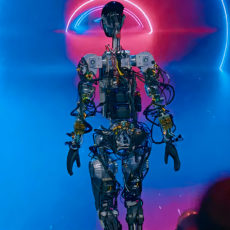
H/t: IEEE Spectrum
You’ve seen Nadia withstand hard shoves while on a treadmill, now TALOS, a humanoid robot, learned how to use a wall to not fall over when pushed, all thanks to D-Reflex. Damage Reflex is activated when the robot detects something in its leg isn’t balanced, and after 882,000 simulated trials, TALOS is able to auto-adjust its posture and determine the location of the wall to stay standing.
Unfortunately, more training is required, as the robot is not able to calculate every position or surface, especially when mid-stride. The goal is to improve D-Reflex to a point where a robot can be moving dynamically and still not fall over, even if one of its actuators fail, relying on objects other than walls.
- With this set, based on the legendary Transformers Autobot, adults build LEGO Optimus Prime figure that converts from robot to truck and back
- Relive the Transformers saga with accessories, including the ion blaster, Autobot Matrix of Leadership, an Energon axe, Energon cube and jetpack
- This unique collectible robot model makes a great home décor piece - top off the build with a unique display plaque with Optimus Prime facts

This article introduces a method, called D-Reflex, that learns a neural network that chooses this contact position given the wall orientation, the wall distance, and the posture of the robot. This contact position is then used by a whole-body controller to reach a stable posture,” said the researchers.







